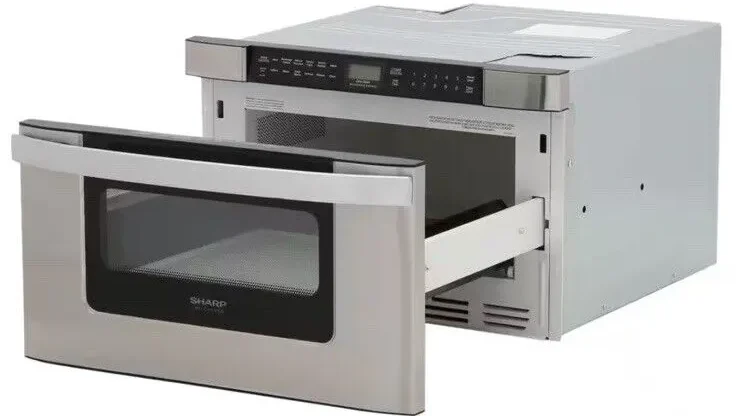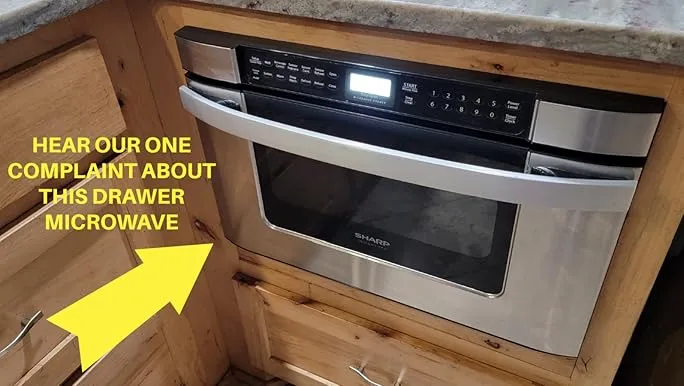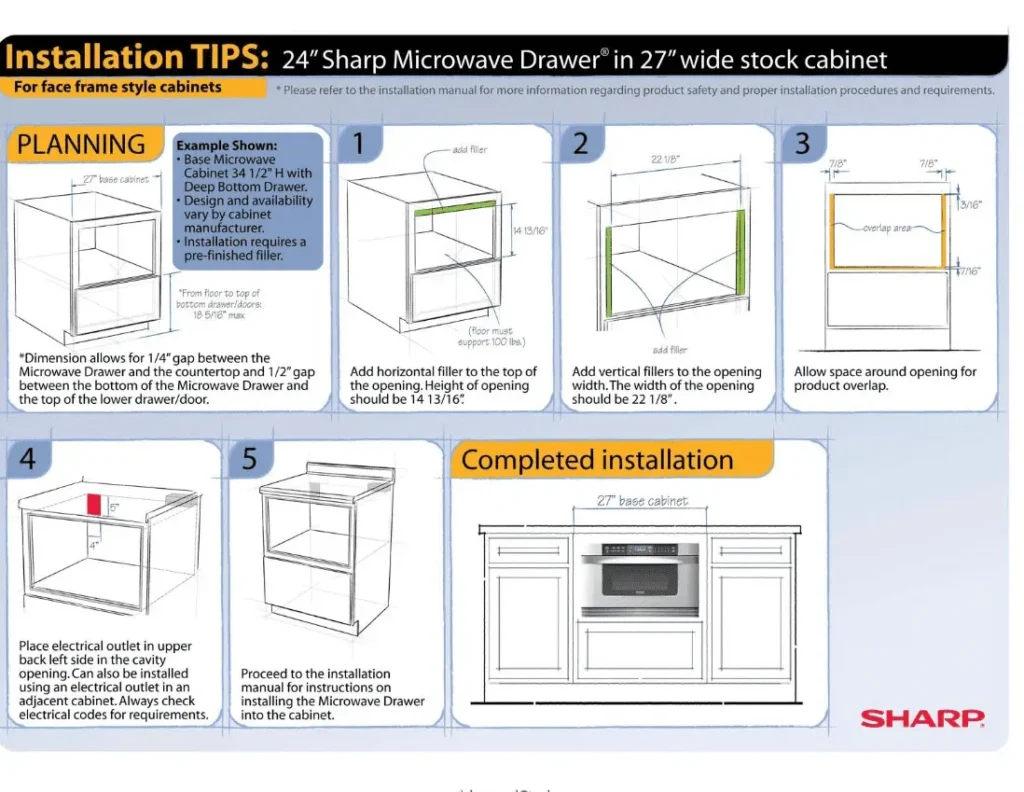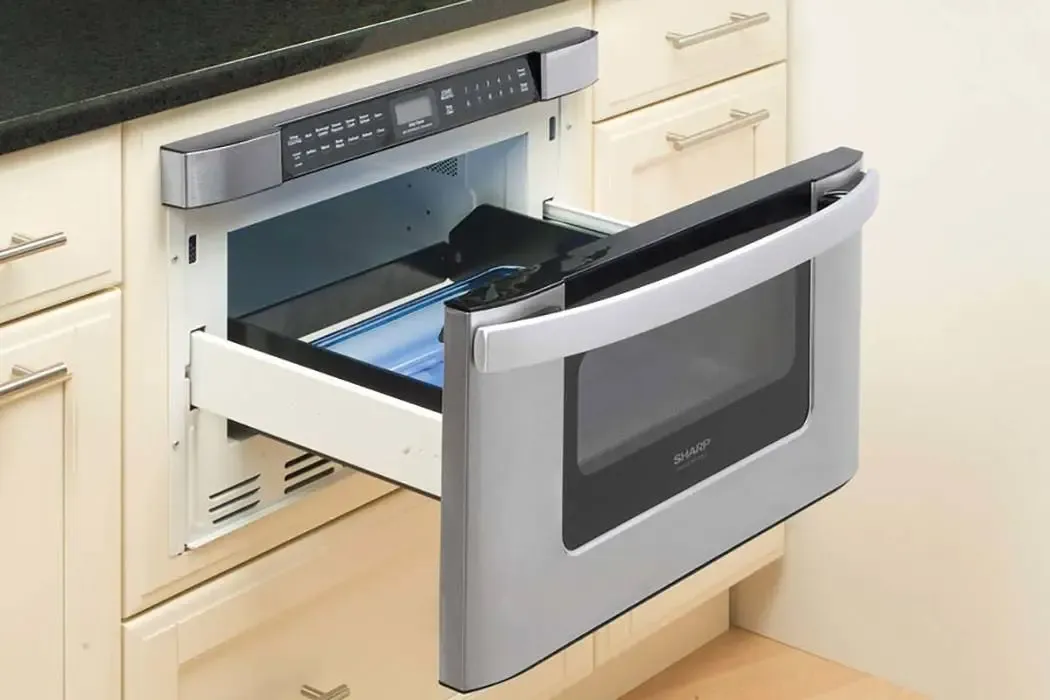Welcome to the definitive guide on the built in microwave! If you’re dreaming of a sleek, streamlined kitchen with seamless appliances, you’ve come to the right place. Moving from a standard countertop model to a wall-mounted unit is a major upgrade, but it requires careful planning. This guide will walk you through everything you need to know, from measuring your space to understanding key features, ensuring you choose the perfect appliance for your home.
So, what exactly is a built in microwave, and why choose one? Unlike a countertop model that takes up valuable prep space, a built-in unit is integrated directly into your cabinetry for a custom, high-end look.
- Pros: Saves counter space, provides a cleaner aesthetic, and often comes with more advanced features.
- Cons: Higher initial cost (appliance plus installation), more complex to install or replace, and fixed in one location.
For many homeowners, the aesthetic and functional benefits far outweigh the drawbacks. Let’s dive into the different types you’ll encounter.
Types of Built-In Microwaves
Not all built-in models are the same. Understanding the three main categories is the first step to narrowing down your options.
1. Standard Built-In Microwave
This is the most common type. It looks similar to a countertop model but is designed to be installed into a cabinet cutout, usually above a wall oven. It requires a specific “trim kit” to bridge the gap between the unit and the cabinet, ensuring proper ventilation and a clean finish.
2. Microwave Drawers
A game-changer in kitchen design, a microwave drawer is installed below the countertop, typically in a lower cabinet or kitchen island. You open it like a drawer, placing your food inside from above. It’s an excellent choice for accessibility (no reaching up) and maintaining clean sightlines in the kitchen.

3. Convection Microwave Ovens
This versatile appliance combines the speed of a microwave with the browning and baking capabilities of a convection oven. A built-in convection model can often serve as a second oven, perfect for roasting vegetables, baking cookies, or crisping up leftovers. It’s the ultimate two-in-one solution for serious home cooks.

The Pre-Purchase Checklist: How to Choose the Right One
Choosing a built in microwave requires more homework than buying a countertop version. Follow this checklist to avoid common pitfalls.
Measuring is Everything 📏
This is the most critical step. An appliance that doesn’t fit is a costly mistake. You need three key built in microwave dimensions:
- Cutout Width: The side-to-side measurement of the cabinet opening.
- Cutout Height: The top-to-bottom measurement of the opening.
- Cutout Depth: The measurement from the front of the cabinet to the back wall.
Pro Tip: Always check the manufacturer’s specification sheet! It will list the precise cutout dimensions required for that specific model. Do not rely on the microwave’s dimensions alone.

Standard Sizes & Capacity
Most built in microwaves are designed to fit into standard cabinet widths of 24, 27, or 30 inches. The capacity, measured in cubic feet (cu. ft.), typically ranges from 1.0 to 2.2 cu. ft. A larger family will appreciate a model with more capacity, while a smaller unit may suffice for individuals or couples.
Key Features Explained
- Wattage: Higher wattage (900W or more) means faster, more even cooking.
- Sensor Cooking: Automatically adjusts cooking time and power level based on the food’s steam levels. No more guesswork!
- Convection & Grilling: These features allow you to bake, roast, and brown, turning your microwave into a multi-functional cooking tool.
- Turntable vs. Flatbed: Turntables rotate food for even cooking, while flatbeds use advanced technology to distribute microwaves without a rotating plate, making them easier to clean and able to fit larger dishes.
Understanding Trim Kits
A trim kit is not just for looks—it’s essential for safety. This frame mounts around your microwave to fill the gap in the cabinet. It provides a clean, integrated look and, most importantly, ensures proper airflow to prevent the unit from overheating. You must use the trim kit designed specifically for your microwave model.
Top Brands Overview
While we have detailed reviews elsewhere, several brands consistently lead the market. GE built in microwave models are known for their reliability, while brands like Sharp are pioneers in microwave drawer technology. KitchenAid and ZLINE offer high-end features and design, catering to gourmet kitchens. Always research specific models, as features can vary widely even within the same brand.
Installation & Costs: DIY vs. Professional
Can you install a wall microwave yourself? Maybe. If you’re simply replacing an old unit with a new one of the exact same size, it can be a manageable DIY project.
However, if you’re creating a new space, it often involves custom cabinet work and dedicated electrical wiring, which should be handled by a professional.
- DIY: Best for exact-size replacements. Requires at least two people to lift the heavy appliance.
- Professional Installation: Expect to pay between $200 and $600 for installation, depending on the complexity of the job. This is the safest option for new installations.
Maintenance & Cleaning
Keep your investment running smoothly with these simple tips:
- Wipe up spills immediately to prevent them from baking on.
- Use a microwave-safe cover to reduce splatters.
- Clean the interior regularly with a solution of water and vinegar or a microwave-specific cleaner.
- Ensure the ventilation grates on the trim kit are never blocked.
Frequently Asked Questions (FAQ)
What is a built in microwave?
It’s a amaoven specifically designed to be installed flush within kitchen cabinetry, creating a seamless, integrated look and saving counter space.
How do you remove a built in microwave?
Removing a built in microwave typically involves a few key steps. First, shut off the power at the circuit breaker. Next, you’ll need to unscrew and remove the outer trim kit. The microwave itself is usually secured to its internal shelf or platform with several mounting screws. Once these are removed, the unit can be carefully slid out of the cabinet. Warning: These appliances are heavy and awkward, so it’s always best to have a second person to help you lift it down safely.
How to replace a built in microwave?
Replacing a unit follows the removal steps in reverse. The key is to find a new model that fits the exact same cabinet cutout dimensions. Always consult the new microwave’s installation manual to confirm compatibility and follow its specific mounting instructions.
Your Kitchen Upgrade Awaits
A built in microwave is more than just an appliance; it’s a statement of style and functionality that can elevate your entire kitchen. By carefully planning, measuring precisely, and choosing the features that matter most to you, you can make a smart investment that you’ll enjoy for years.
Ready to find the perfect model? Check out our list of the best built in microwave units for 2025 to see our top picks!
Did You Try Our Recipe?
There are no reviews yet. Be the first one to write one.

